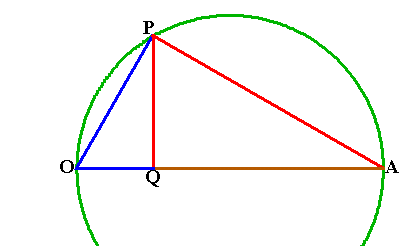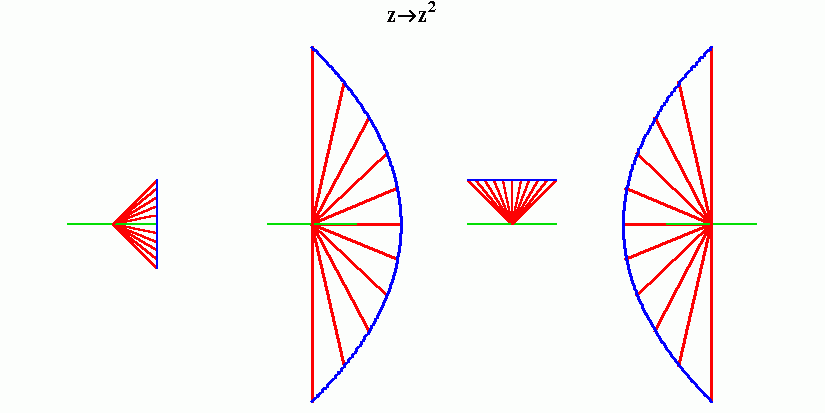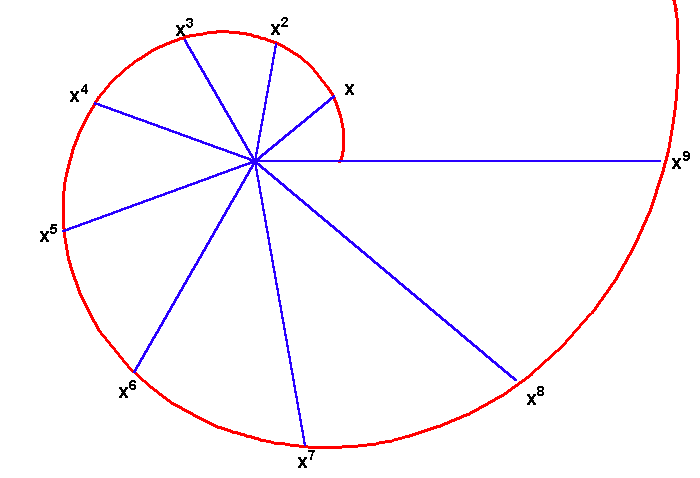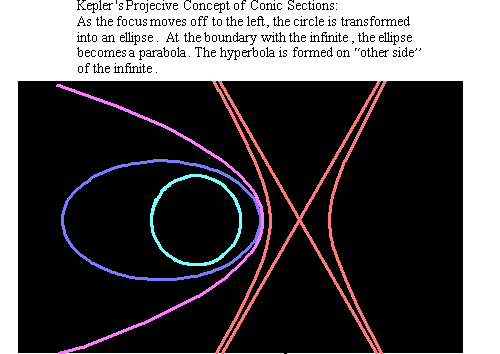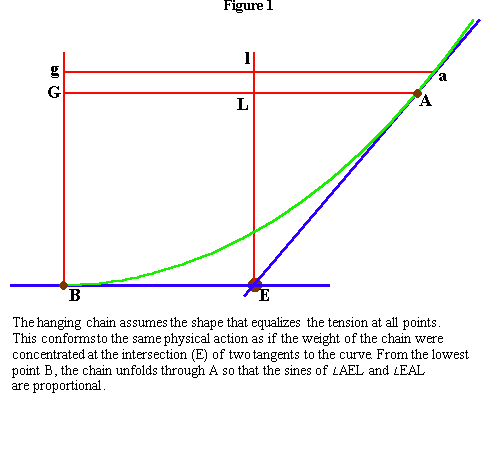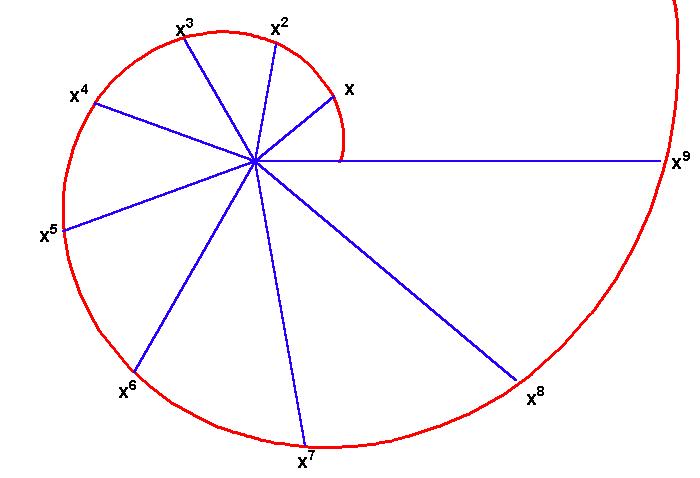Riemann for Anti-Dummies Part 44
PRINCIPLES AND POWERS
Rembrandt van Rijn’s masterpiece, ?Aristotle Contemplating a Bust of Homer?, conveys a principle that leads directly into the deeper implications of Gauss’ and Riemann’s complex domain. In the painting, the eyes of both figures are fixed directly before them, yet, Aristotle’s gaze is insufficient to guide him. To find his way, he reaches forward to touch the likeness of the poet, who, though blind in life, leads the blocked philosopher in a direction he would otherwise be incapable of finding.
Like the navigators of ancient maritime civilizations, Rembrandt’s Homer knows that straight-ahead is not necessarily where your eyes point. When following a course across some wide expanse, these discoverers would mark their passage by noting the motions of celestial bodies, the which were charted as changes of positions on the inside of the sphere whose center was the eyes of the observer. When the observer’s position changed, so did the positions of everything on the sphere, but the manifold of vision remained a sphere and the eyes of the observer remained at its center. A stationary observer would note certain changes in the positions of celestial bodies over the course of a night and from night to night. An observer moving on the Earth noted these changes, plus the changes in these changes resulting from his own motion. These changes, and changes of changes, formed a map in the mind of the explorer — not a static map, but a map of the principles that caused the map to change. It is the map of principles on which all explorers, from those days to this, place their trust.
While a map, such as one of positions of celestial bodies on the inside of a sphere, can be represented directly to our senses, a map of principles can only be represented by the methods exemplified by Rembrandt’s painting. Principles do not appear as objects in the picture, but as ironies that evoke the formation of their corresponding ideas in the imagination of the viewer. The scientist in pursuit of unknown principles, must master the art of recognizing the ironies that appear, not only from known principles, but those still to be discovered; the latter emerging as paradoxes. In the case of physical principles investigated by mathematical images, these paradoxes present themselves as anomalies, as for example, the emergence of “-1, within the domain of algebraic equations. The poetic scientist takes the existence of such anomalies as evidence of a principle yet to be discovered, and re-thinks how his map must change to include this new principle. C.F. Gauss measured this type of transformation as a change in curvature. This work was extended by B. Riemann through his theory of complex functions, most notably in his major works on the hypergeometric and abelian functions.
What has failed Rembrandt’s Aristotle, is not his eyes, but his map. A map which has changed by a principle, that on principle, he insists doesn’t exist and cannot be known if it did. Disoriented he’s left to grope in the only direction he knows straight ahead. Fortunately for him, straight ahead stands the lifeless image of Homer, possessed with the power to light his way.
Curvature and Power
This method of discovery is already evident in the work of Archytas, who taught that the physics of the universe could be discovered through investigations of the paradoxes arising in arithmetic, geometry, spheric (astronomy) and music. His collaborator, Plato, prescribed mastery of these four branches of one science, as essential for the development of political leadership.
The solution Archytas provided for doubling the cube exemplifies the principle. As it was developed more fully in previous pedagogical discussions (see Riemann for Anti-Dummies Part 42) the problems of doubling the line, square and cube, presents us with the existence of magnitudes of successively higher powers, each of which is associated with a distinct principle. The Pythagoreans called the power that doubles the line, arithmetic, and the power that doubles the square geometric, which they associated with musical intervals as well as mathematical ones. In their most general form, the arithmetic is associated with a division of a line, while the geometric is associated with a division of a circle. (See figure 1 and figure 2). From Gauss’ standpoint, the change in power from the arithmetic to geometric is associated with a change in curvature from rectilinear to circular.
|
Figure 1 |
Figure 2 |
As Hippocrates of Cios indicated, to double the cube requires placing two geometric means between two extremes. At first blush, this can be accomplished within the domain of circular action by connecting two circles to each other. (See figure 3.) Thus, while the difference between the arithmetic and geometric presents clearly a change in curvature, the power associated with generating two geometric means, in first approximation, seems to require only another circle, hence, no change in curvature.
|
Figure 3 |
 |
Yet, when the specific physical problem of doubling the cube is posed, that is, to find two geometric means between two determined extremes, (in this case 1 and 2) the existence of the higher power emerges into the map, as a new type of curvature. (See animation 1.) As can be seen in the diagram, to find two geometric means between 1 and 2, we must find the place along the circumference of the circle for point P so that the line OB is one-half of OA. This will occur somewhere along the pathway traveled by B as P moves around the circle from O to A. But, as the dotted line which traces that path indicates, this curve is not a circular arc, and is, in fact, non-uniform with respect to the circle. Thus, the existence of the yet to be discovered principle, emerges through the presence of an anomalous change in curvature in our map.
|
Animation 1 |
|
|
This anomaly takes on an entirely different characteristic in Archytas’ construction using the torus, cylinder and cone. (See figure 4 andanimation 2.) When the torus and cylinder are generated by rotating one circle orthogonally around another, the motion of point P is now simultaneously on two different curves: the circle and the curve formed by the intersection of the torus and the cylinder. An observer facing the rotating circle, and who was rotating at exactly the same speed as the circle, would only see point P move around the circumference of the circle and would adequately conclude that one geometric mean between two extremes is a function of circular action alone. But, as indicated above, the emergence of the non-circular curvature of the path of point B, would indicate to such an observer, the existence of a new principle causing the motion of P around the circle. Archytas’ construction takes that new principle into account, by determining the motion of P around the circle as a function of P’s motion along the curve formed by the intersection of the torus and cylinder. In other words, the circular rotation of P is only a shadow of a higher form of curvature. That latter curve expresses both the power to produce one geometric mean between two extremes, and also, when combined with a cone, to produce two. (See figure 4.)
|
Figure 4 |
Animation 2 |
Two other examples, presented summarily, will help illustrate the point. Kepler, like all astronomers before and since, observed the motions of the planets as circular arcs on the inside of a sphere. His discovery of the elliptical nature of these orbits occurred, not by suddenly seeing an ellipse, but by his recognition that the 8′ of an arc deviation between the circular image of the planet’s orbit on the celestial sphere, and the circular image of the Earth’s motion (as reflected in the motion of the fixed stars on that same celestial sphere), was evidence of a new principle of planetary motion. The new principle manifested itself as a change in curvature within his map of principles. He measured that change in curvature by measuring equal areas instead of equal arcs, and measuring eccentricities by the proportions that correspond to musical harmonics.
Similarly, Leibniz and Bernoulli determined that the catenary was not the parabola that Gallileo wrongly considered it to be, by showing that the slight deviation of the curvature of the physical hanging chain, from the curvature of the parabola, was evidence that the chain was being governed by a different principle than the one Gallileo assumed. Gallileo demanded, as if in a bi-polar rage, that the chain conform to a parabolic shape, because he was obsessed with his mathematical formula that the velocity of a falling body varies according to the square root of distance fallen. Leibniz and Bernoulli, demonstrated that the chain was, in truth, obeying a higher principle, the non-algebraic, transcendental principle associated with Leibniz’ discovery of natural logarithms. A principle that the enraged Gallileo was incapable of conceiving.
Gaussian Curvature
To proceed further it is important to distinguish between commonplace sense-certainty notions of curvature and the rigorous understanding of that idea associated with Gauss. The commonplace notion, associated with the doctrines of Gallileo, Newton, Euler, et al. is that curvature is a deviation from the straight. But, from the standpoint of the planet, for example, ?straight?, is a unique elliptical path; or, from the standpoint of a link in a chain, ?straight? is the catenary curve. It is only a self-deluded fool who thinks that ?straight? can be determined by some arbitrary, abstract dictate. Rather, ?straight? is a function of the set of principles that are determining the action. The addition of a new principle will change the direction of ?straight?. That change in principle is measured as a change in curvature.
This is the basis from which Gauss developed his, ?General Investigations of Curved Surfaces?. He considered a curved surface to be a set of invariable principles that determined the nature of action on that surface. As long as that set of principles was not changed, the nature of the action did not change, even if the surface was bent or stretched. The nature of the action could only be changed, by a change in the set of principles that defined the surface. Gauss measured such a change in principle as a change in curvature, which in turn, determined what is ?straight? with respect to that set of principles.
Furthermore, Gauss showed, as Leibniz did for curves, that this set of invariable principles were expressed in the smallest elements of the surface. Consequently, from the smallest pieces of ?straight? curves (geodesics) on the surface, and their directions, the curvature of the surface could be determined. (This aspect of Gauss’ work will be developed in a future pedagogical.)
The method Gauss developed to measure curvature had its roots in Kepler’s method for measuring the elliptical nature of a planetary orbit, the which was generalized by Leibniz into his development of the calculus. Confronting the difficulty of measuring the planet’s non-uniform elliptical motion directly, Kepler mapped the constantly changing speed and direction of the planet onto a circular path, and measured the planet’s action by the relationships among the three anomalies (eccentric, mean and true) that appeared in the circular map. (See Summer 1998 Fidelio pp. 29-34).
To measure the curvature of a surface, Gauss extended Kepler’s method from the mapping of a curve onto a circle, to the mapping of a surface onto a sphere, a method he likened to the ancient use of the celestial sphere in astronomy. In that case, the motion of celestial bodies are mapped by the changing directions of lines from the observer to the body’s image on the inside of the celestial sphere. Since whatever principle is governing the body’s motion, is governing the changes in direction of those lines, measuring the map of those changes in direction is an indirect measurement of the governing principle.
Gauss recognized that the invariable principles governing a surface could be expressed by the changing direction of the lines perpendicular to the surface at every point, called ?normals?. While at any point of a surface there are an infinite number of tangents (See Figure 4) there is a unique tangent plane for each point, which in turn defines a unique normal that is perpendicular direction to this tangent plane. The direction of the normal is a function of the curvature of the surface. (This is a principle of physical geometry, as exemplified by the determination of the physical horizon as that direction that is perpendicular to the pull of gravity.)
The sphere has the unique characteristic that all its normals are also radial lines. Using this property, every normal to a surface will correspond to a radial line of a sphere that is pointing in the same direction. As a normal moves around on a surface, its direction changes. If a radial line of the sphere is made to change its direction in the same way as the normal to the surface, it will trace out a curve on the surface of the sphere, that will reflect the principle governing the changes in direction of the normal on the surface.
This is illustrated by example in animation 3 and animation 4. In these examples, the part of the ellipsoid marked out by the yellow curve, is mapped onto a sphere. As the red stick moves around the ellipsoid, its changing direction is determined by the changing curvature of the surface. These changes are mapped onto a sphere, by the motion of the blue stick, which emanates from the center of the sphere and is always pointing in the same direction as the red stick. Gauss called the area marked out by the blue stick on the sphere the, ?total or integral curvature? of the surface. If the red stick were moving along a plane, its direction would not change, and the blue stick would not move. Since this would obviously mark out no area, Gauss defined a plane as a surface of zero curvature. The greater the area marked out on the sphere, the greater the curvature of the surface being mapped.
|
Animation 3 |
Animation 4 |
This can be seen from the above two examples. In animation 3 the red stick is moving around a large area of the ellipsoid, but because that region is less curved, its direction doesn’t change very much, and the corresponding area on the sphere is small. Whereas, in animation 4, the area on the ellipsoid is small, but very curved, so the area marked out on the sphere is larger.
This total curvature does not change even if the surface is deformed. For example, try and determine the spherical map of a part of a cone or a cylinder.
Using this method, Gauss was able to not only measure the ?amount? of curvature, but he was also able to distinguish types of curvature that are determined by different sets of principles. For example, animation 5 illustrates the mapping of a surface called a ?monkey saddle?. (This type of surface should be familiar to those who have been working on Gauss’ 1799 proof of the fundamental theorem of algebra.) In this mapping the curvature of the area denoted by the yellow curve on the monkey saddle is mapped to the sphere. As the red stick moves once around the area on the monkey saddle, the blue stick marks out the spherical area twice. This double covering of the spherical area indicates that the curvature of the monkey saddle embodies a different set of principles than the curvature of the ellipsoid.
|
Animation 5 |
|
|
A still different type of curvature emerges when Gauss’ mapping is applied to a torus as in animation 6, and animation 7. In animation 6, a part of the outside of the torus is mapped producing a corresponding area on the sphere, similar to what happened on the ellipsoid. But, in animation 7, the area of the torus is situated on both the inner and outer part. The mapping of these directions produces a figure eight type of curve on the sphere that crosses itself at the north pole. Each time the red stick crosses the circle that forms the boundary between the inner and outer part of the torus, the blue stick crosses the north pole of the sphere, with one loop of the figure eight corresponding to the inner part of torus, and the other loop the outer part. The area on the torus is bounded by a non-intersecting curve, while its map on the sphere is bounded by an intersecting one. The presence of this singularity on the spherical map indicates that the boundary between the inner and outer parts of the torus is a transition from one type of curvature to another. Consequently, the torus must be governed by a different set of principles than the ellipsoid or monkey saddle a set of principles that encompass a transition between two different types of curvature.
|
Animation 6 |
Animation 7 |
To summarize: for the ellipsoid, the Gaussian mapping produced a simple area whose size varied with the curvature of the surface. The mapping of the monkey saddle produced an area that was double covered. The mapping of the torus, produced a singularity. These mappings not only measure the ?amount? of total curvature of the part of the surface mapped, but the appearance of anomalies and singularities in the mapping, indicate the presence of additional principles of curvature as well.
Like the Chorus in Shakespeare’s Henry V, who, alone on an empty stage, summons the imagination of the audience to envision the real principles of history and statecraft that are to be depicted, these anomalies and singularities call the attention of the scientist to imagine the set of principles that produced them. Therein, is where











